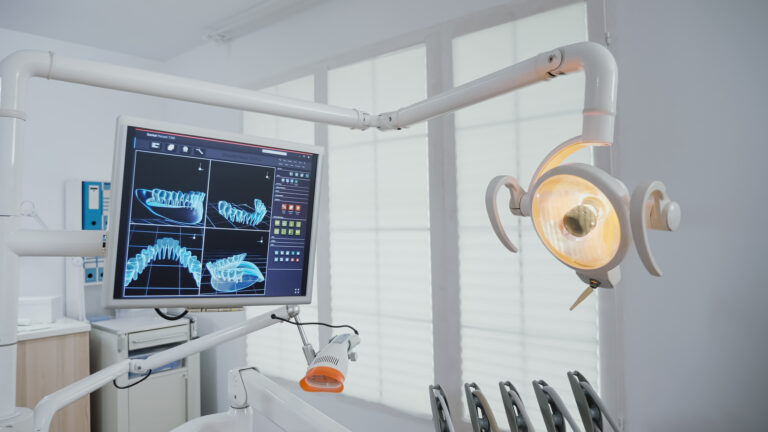Learn Top 5 Benefits of E-invoicing for Medical Suppliers Now
Table of Contents
Introduction
In today’s fast-moving medical supply ecosystem, E-invoicing is no longer a luxury, it’s a necessity.
For Medical Suppliers across India, especially those selling through B2B Marketplaces, traditional invoicing systems are proving slow, error-prone, and costly.
Paper-based processes lead to delays, disputes, and missed opportunities.
With rising demand from clinics, hospitals, and diagnostic labs, streamlining billing is essential.
This is where E-invoicing steps in as a powerful tool.
Not only does it reduce paperwork, but it also ensures faster payments, better compliance, and enhanced trust with buyers.
Moreover, India’s push for digital GST compliance and integration with government systems makes e-invoicing a future-ready move.
In this article, we’ll explore the top 5 benefits of e-invoicing for medical suppliers and show why adopting it now can boost your cash flow and credibility.
Whether you’re a small vendor or a growing exporter, this guide will help you stay competitive, efficient, and digitally compliant.
1. How Does E-Invoicing Help Medical Suppliers Reduce Manual Paperwork and Errors?
For Medical Suppliers, managing thousands of transactions manually can be overwhelming.
Traditional invoicing methods often involve paper trails, handwritten data, and email threads.
This increases the risk of errors, wrong quantities, tax mismatches, duplicate entries, or missing records.
E-invoicing eliminates these inefficiencies.
It automates the creation, sharing, and storage of invoices in a digital format that integrates directly with accounting systems and B2B Marketplaces.
This not only speeds up the entire billing process but also ensures consistency and accuracy across every transaction.
Here’s how e-invoicing reduces paperwork and errors:
- Auto-Population of GST Details: Data is fetched automatically from your systems, reducing manual entry and tax filing mistakes.
- Pre-Validation with GST Portal: Invoices are digitally validated through the government’s e-invoice portal, reducing rejection rates.
- Easy Record-Keeping: Every invoice is digitally archived and easy to retrieve during audits, reducing the burden of physical filing.
- Real-Time Updates: Any correction or cancellation is logged in real time, avoiding confusion or duplication.
For medical suppliers dealing with high-volume buyers, such automation can save hours each week and dramatically cut down human error.
The result? Improved credibility with hospitals and clinics and smoother cash flow.
2. What Role Does E-Invoicing Play in Speeding Up Payments from Clinics, Hospitals, and Distributors?
One of the biggest challenges medical suppliers face is delayed payments, whether from clinics, hospitals, or distributors.
These delays often stem from lost invoices, processing backlogs, or approval hierarchies within healthcare institutions.
This is where e-invoicing plays a critical role.
With e-invoicing, invoices are generated and delivered in real time.
The moment a transaction is completed, the buyer receives a GST-compliant invoice instantly via email or integrated ERP platforms.
This removes bottlenecks such as:
- Waiting for physical delivery of invoices
- Manual approvals or scanning delays
- Payment cycles that start late due to late invoicing
Additionally, most e-invoicing platforms integrate automatic payment reminders and status tracking.
You can easily check whether an invoice has been delivered, viewed, or approved, allowing you to follow up precisely when needed, not blindly.
For B2B transactions on medical supplies marketplaces, faster invoicing equals faster processing of payments.
Hospitals and large distributors, bound by monthly budget closures, are more likely to process timely payments when your invoices are in their system without delay.
In short, e-invoicing helps medical suppliers reduce the average payment cycle from 30–60 days to as low as 10–15 days, freeing up much-needed working capital.
3. Is E-Invoicing Mandatory for Small Medical Businesses Under GST Rules in India?
E-invoicing, under India’s Goods and Services Tax (GST) regime, is being gradually rolled out with defined thresholds.
For small medical businesses and MSME suppliers, it’s important to understand whether you are currently mandated to comply.
As of 2025, the e-invoicing mandate applies to all businesses with aggregate turnover exceeding ₹5 crore in any financial year from 2017–18 onwards.
This includes manufacturers, traders, service providers medical suppliers.
Here’s what small businesses should note:
Criteria | E-Invoicing Requirement |
Turnover > ₹5 Cr (FY17-18 onward) | Mandatory |
Turnover ≤ ₹5 Cr | Optional (Not mandatory yet) |
B2C Transactions | Not required |
Exempt Entities (like SEZ Units) | Not applicable |
If your medical supply business falls below the ₹5 crore threshold, you are currently exempt from mandatory e-invoicing.
However, the government has signaled plans to lower this threshold in phases.
Therefore, even small B2B medical suppliers should consider adopting e-invoicing early to stay ahead of compliance requirements.
Voluntary adoption can also improve operational efficiency, reduce manual paperwork, and enhance trust with large institutional buyers like hospitals and pharmacy chains.
In summary, while e-invoicing may not yet be mandatory for all small medical suppliers, it is strongly recommended for improving compliance, cash flow, and competitive positioning, especially if you plan to scale or bid for large contracts.
4. Which E-Invoicing Software Platforms Are Best Suited for Small Medical Suppliers?
For small medical suppliers looking to adopt e-invoicing, the right software can make a big difference.
The ideal solution should be affordable, GST-compliant, and easy to use even for first-time digital users.
Fortunately, several platforms in India are tailored to meet the needs of MSMEs in the medical supplies sector.

Here are the top options:
1. Zoho Invoice (Free Plan Available)
- Best for: Freelancers and small businesses
- Features: GST-ready, automated invoice generation, multi-currency, client portal
- Pros: Clean interface, cloud-based, free for small businesses
- Why It Works: Ideal for small-scale medical suppliers selling on B2B marketplaces or directly to clinics
2. TallyPrime with E-Invoicing Add-On
- Best for: Suppliers already using Tally for accounting
- Features: Seamless e-invoicing through IRP, automatic GST calculations, bulk uploads
- Pros: Trusted legacy platform, integrates with existing accounting setup
- Why It Works: Good for medical dealers needing inventory + accounting + e-invoicing in one place
3. Marg ERP
- Best for: Pharmacies, distributors, and diagnostic supply vendors
- Features: Batch tracking, GST billing, stock management, e-invoice compliance
- Pros: Specially designed for medical inventory and trade
- Why It Works: Tailored for medical suppliers handling multiple SKUs with expiry tracking
4. Government-Supported Free Utility (Offline Tool)
- Best for: Very small or rural businesses
- Features: Available on einvoice1.gst.gov.in, generate JSON for IRP submission
- Pros: No cost, officially maintained
- Limitations: Manual entry, less suited for bulk or complex operations
5. BUSY Accounting Software
- Best for: Distributors and manufacturers scaling across states
- Features: GST and e-invoicing, ledger reports, stock valuation
- Why It Works: Great for MSME medical suppliers managing interstate trade or online B2B sales
Key Takeaway
Choose an e-invoicing platform based on your business size, volume of invoices, and digital readiness.
For small medical suppliers trying to digitize operations and cut down paperwork, these tools are essential to remain compliant and competitive, especially while operating across B2B marketplaces and modern healthcare channels.
5. How Can E-Invoicing Improve Cash Flow and Working Capital Management for Healthcare Vendors?
For healthcare vendors, managing cash flow is a daily challenge.
Delayed payments, invoice disputes, and manual errors often lead to blocked capital and financial stress.
This is where e-invoicing proves invaluable, especially for medical suppliers dealing with high-volume transactions across B2B marketplaces.
Here’s how e-invoicing supports better cash flow and working capital management:
1. Faster Payment Cycles
When invoices are generated and shared instantly in a standardized digital format, clients (like hospitals, clinics, and distributors) can process payments quickly.
Real-time delivery eliminates delays due to courier or manual handovers, helping vendors receive funds earlier and maintain a smoother working capital cycle.
2. Reduced Disputes and Rejections
Since e-invoices are generated with GST validations and system-based checks, the chances of human errors drop significantly.
This reduces the number of rejected or disputed invoices, meaning vendors avoid payment holds and ensure consistent cash inflows.
3. Integration with Accounting Systems
Most modern e-invoicing platforms sync directly with billing and inventory software like Tally, Zoho, or Marg ERP.
This helps track receivables in real time, send automated reminders, and reconcile payments efficiently of which are crucial for MSME businesses working on tight margins and reliant on small loans or supplier credit.
4. Better Cash Flow Forecasting
Digital invoicing systems give vendors access to dashboard-level visibility into outstanding payments, due dates, and customer-wise histories.
This empowers them to plan outflows (e.g., raw material purchases, payroll) in sync with expected inflows, optimizing working capital usage without over-leveraging or missing commitments.
5. Improved Creditworthiness
Timely payment tracking and structured cash flow cycles also lead to improved financial discipline.
This boosts the vendor’s credit profile, increasing their eligibility for working capital loans, better supplier terms, or embedded credit solutions from platforms.
Summary
By automating the invoicing process and reducing friction in collections, e-invoicing becomes a strategic financial tool, not just a compliance requirement.
It enables medical suppliers to maintain liquidity, access timely credit, and grow sustainably in India’s evolving digital healthcare and B2B ecosystem.
Conclusion: Why E-Invoicing Is a Game Changer for Medical Suppliers
In the fast-evolving B2B healthcare ecosystem, medical suppliers face constant pressure to reduce paperwork, accelerate payments, and maintain healthy working capital.
E-invoicing is no longer just a compliance requirement, is a competitive advantage.
From minimizing manual errors to enabling real-time payment tracking, digital invoicing brings unmatched efficiency to billing workflows.
It eliminates delays caused by physical paperwork, helps vendors get paid faster by hospitals and clinics, and reduces the risk of disputes.
When integrated with accounting systems like Tally, Marg ERP, or Zoho, e-invoicing also supports financial clarity and seamless reconciliation.
Most importantly, faster payment cycles and better cash flow visibility allow suppliers to manage inventory, negotiate better vendor terms, and qualify for working capital loans without over-borrowing.
Whether you’re a small MSME or a growing supplier on B2B marketplaces, adopting e-invoicing today sets the foundation for sustainable growth and financial discipline
Following Video Might be Helpful for You
Also Read,
- The Ultimate Guide: Working Capital Loans for Small Business (MSMEs) in 2025
Understanding the Impact of Payment Terms on Working Capital for Clinics
How Poor Inventory Management Hurts Working Capital in Pharmacies.
Want a Better Business Credit Score? Small Pharmacies Can Now Use UPI & Cards to Build It
Want a Better Credit Score? Use Small Daily Payments to Build Your CBIL (For Clinics & Pharmacies)
Case Study:How a Small Clinic Improved Its Working Capital Management





